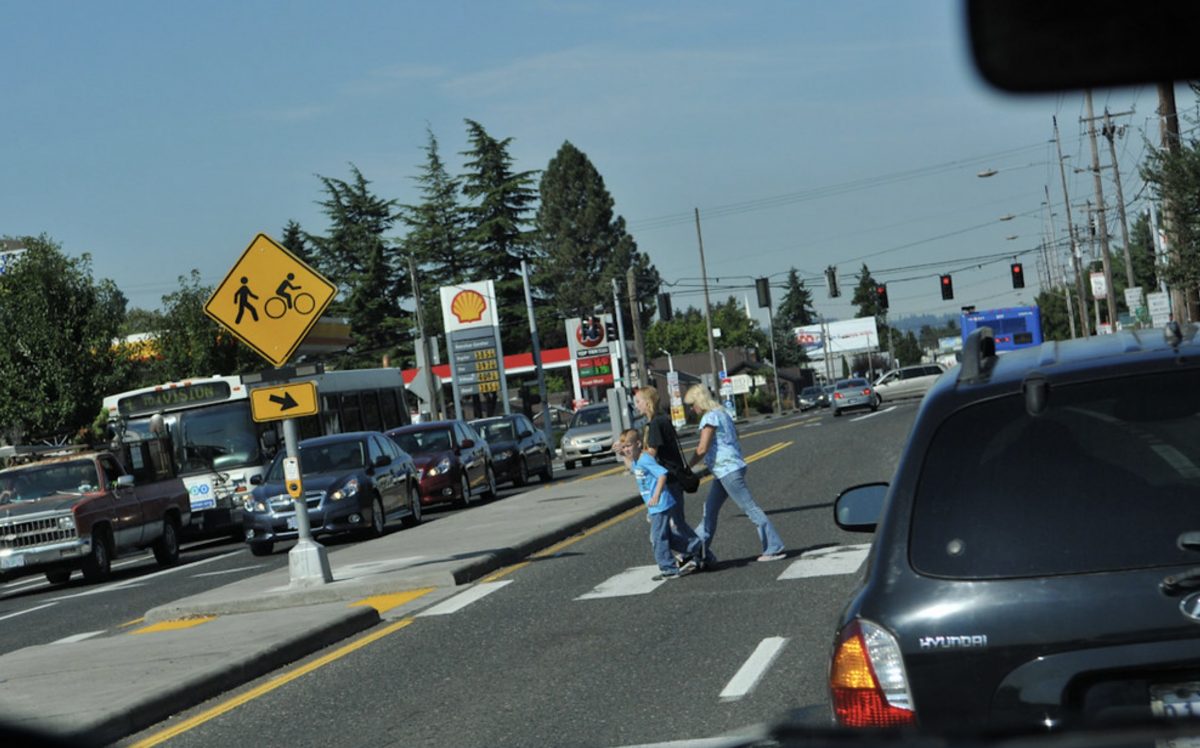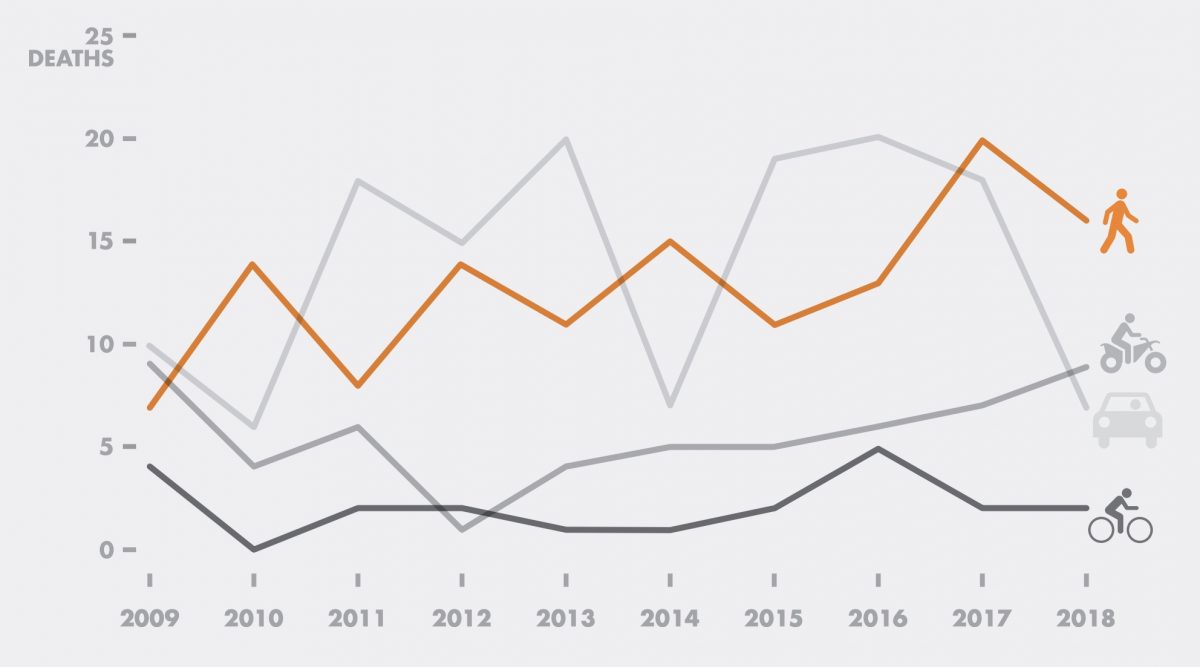
(Photo: J. Maus/BikePortland)
Portland City Commissioner Jo Ann Hardesty wants the transportation bureau to do more about distracted walking.

(Photo: City of Portlnd)
During a City Council presentation on the Portland Bureau of Transportation’s two-year update on its Vision Zero efforts last week, Hardesty said the problem of people staring into phones while they use sidewalks and streets needs to be taken more seriously.
Hardesty’s comments set off a notable exchange with Commissioner Chloe Eudaly, who oversees PBOT.
The exchange came as PBOT Active Transportation and Safety Division Manager Catherine Ciarlo presented the bureau’s “safe systems” approach to road safety. One of the key tenets of that approach is a shared responsibility for safety that takes into account road design and engineering — as well as individual choices. “Safety is the responsibility of the user of the system; but it is it also the responsibility of the owner of the system, the manager of the system, and the designer of the system,” Ciarlo said.
“So the implication is that it’s the peoples’ fault?” Hardesty asked. “If they acted right, the streets would be safer?”
“If anything, the safe systems approach says it’s not the user’s responsibility because all people make mistakes,” Ciarlo answered. “We’re all going to make mistakes and a safe system designs things, manages things, and educates people in a way that assumes those mistakes will be made and looks to protect against them.”
Then Ciarlo shared PBOT’s four Vision Zero priorities for the next two years. “Protect pedestrians” and “create a culture of shared responsibility” were among them. “And just to be clear, Commissioner Hardesty,” Ciarlo said, “That culture of safety isn’t about assigning blame to people injured by the system, but to create a culture in this city of moving more slowly, of looking out for vulnerable people in the roadway, and of making decisions that result in a safe system.”
At that point Hardesty interjected again:
“I have noticed there are lot of individuals who move through streets and sidewalks never actually looking up. They are on some electronic device that apparently is more important than whether or not they survive crossing the street. To me, I’ve noticed that is a huge issue. Is there any local data on it? I know we’re not talking about blame. But I think we should have the expectation that people actually look where they’re going when they cross the street and not be on their device.”
Advertisement

Ciarlo responded by saying “distracted walking” wasn’t called out as a specific risk factor when the Vision Zero plan was finalized tow years ago. She said the focus has been on things like lowering driving speeds, “Because if people are making that mistake of walking around distracted — which we don’t want them to do — we also don’t want them to get killed doing it.”
“I can tell you from personal anecdotal data there are way, way, way too many people walking with their eyes in their electronic stuff — whether a light is red or green — I’ve observed that over and over again… it scared me when I was driving.”
— Commissioner Hardesty
Then Eudaly chimed in. She called distracted walking, “a chronic problem for sure.” “But in reality,” she added, “With our pedestrian crashes, the majority of people were obeying the law and not doing anything wrong and they were still hit and killed.”
Hardesty then expressed concern that PBOT was collecting data on and enforcing distracted driving, but not distracted walking. “We need a full set of data to not just assume it’s one causation to the outcomes we’re getting,” she said. “Because I can tell you from personal anecdotal data there are way, way, way too many people walking with their eyes in their electronic stuff — whether a light is red or green — I’ve observed that over and over again… it scared me when I was driving.”
With her transportation background, and perhaps a sense that Hardesty’s comments needed a more forceful retort, Eudaly went a bit deeper with her final response. “I share your belief there’s a shared responsibility,” she said to Hardesty. “We have a very auto-centric culture. We tend to blame the victims in these crashes when in fact the stats show they are following the laws. So my pushback on responsibility isn’t a denial that pedestrians or cyclists need to follow laws or be more responsible, it’s more of the false narrative among car advocates who don’t want to take responsibility for their role, who don’t want us to inconvenience them by making our transportation system safer for pedestrians and cyclists
— and despite the fact vehicles have only been on the road 120 years while roads have been here for millennia — think roads should be sole conduits for automobiles.”
This isn’t the first time Hardesty has shared her opinion on this topic. During a candidate forum in April 2018, she responded to a question about traffic safety in east Portland by saying, “I can tell you there are pedestrians that walk out in front of cars because they think they have bumpers and no one will hit them.”
Stay tuned for a closer look at PBOT’s two-year Vision Zero/Safe Systems update.
— Jonathan Maus: (503) 706-8804, @jonathan_maus on Twitter and jonathan@bikeportland.org
Never miss a story. Sign-up for the daily BP Headlines email.
BikePortland needs your support.

